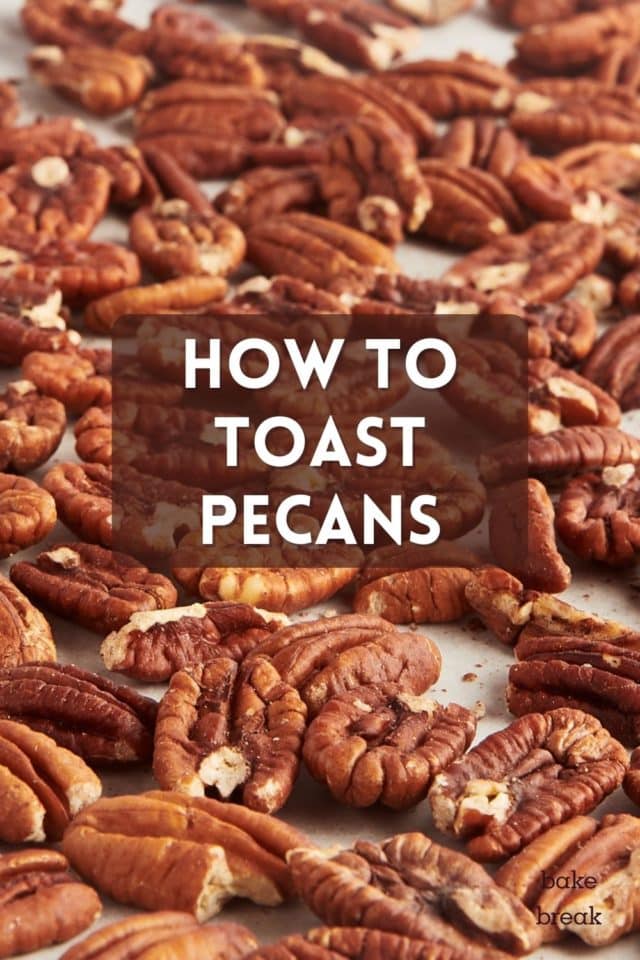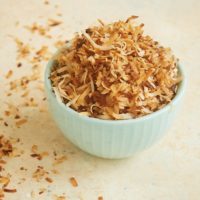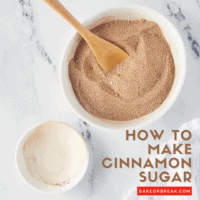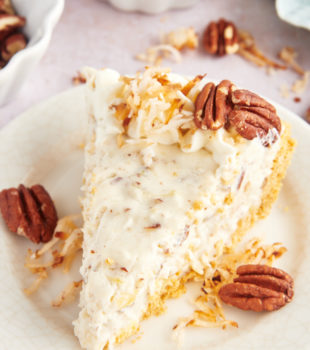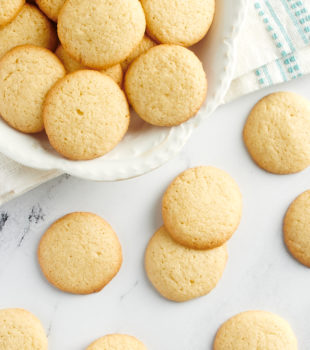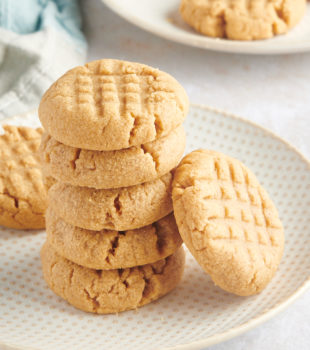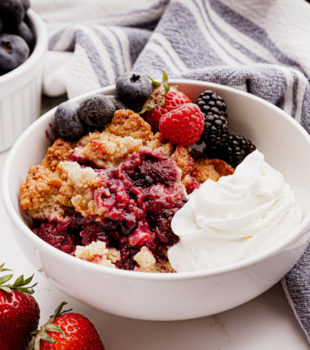Follow these simple steps for perfectly toasted pecans that will bring new life to your baking recipes!
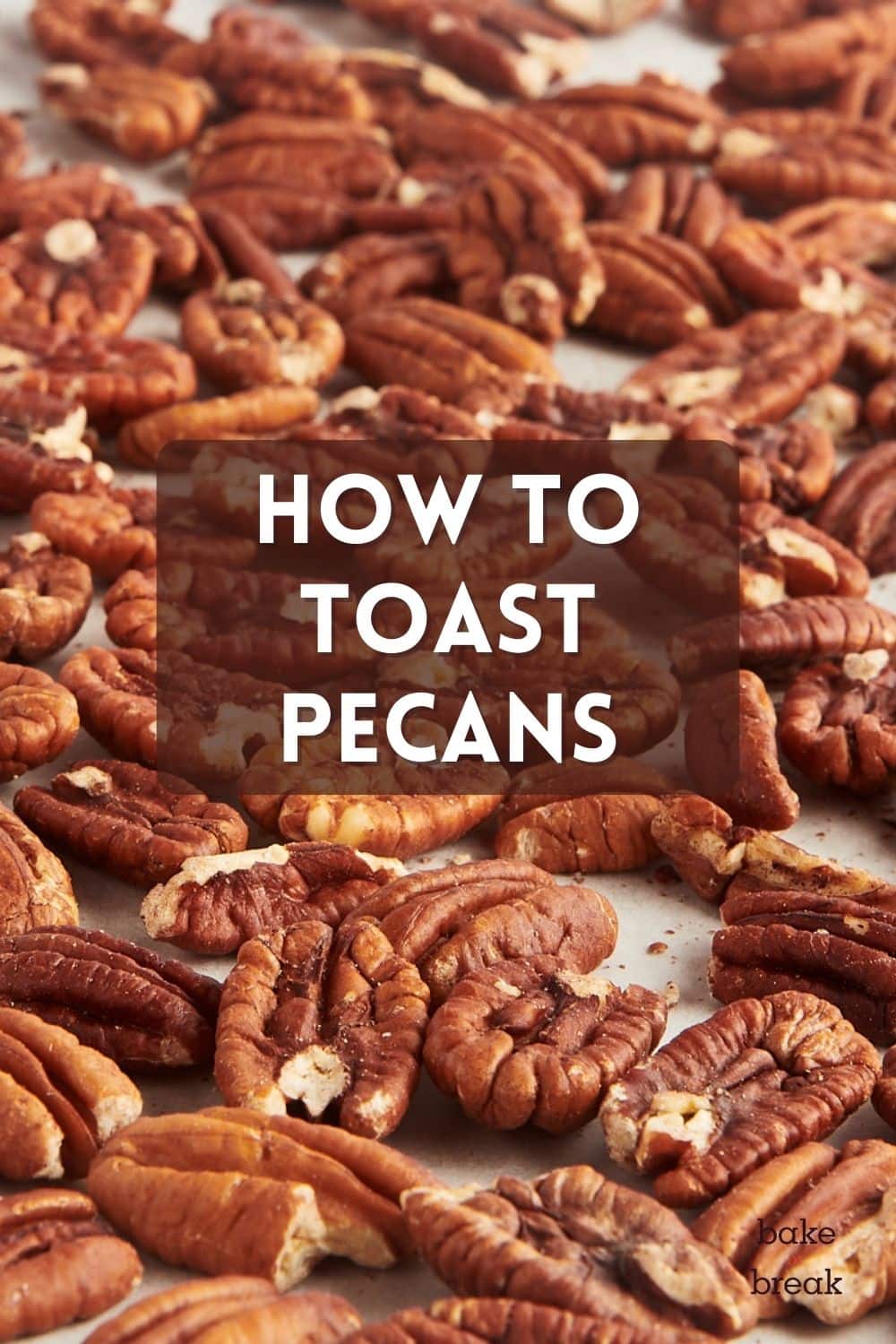
Easy Toasted Pecans
The irresistible crunch, the mouthwatering aroma, the rich, nutty flavor… Toasted pecans are a baker’s secret weapon. Whether you’re planning to sprinkle them atop a finished dessert, fold them into a batch of your favorite cookies, or create a show-stopping dessert, knowing how to toast pecans is a skill that elevates your dishes to new heights!
Get ready to learn the techniques, tips, and tricks for toasting pecans. Whether you’re a new baker or a seasoned pro, you’ll see that perfecting the art of toasting pecans is a simple and rewarding way to add flavor and depth to your baking.
Table of contents
Why Toast Pecans?
Toasting pecans brings out all their best characteristics. Applying heat to pecans releases their oils, which in turn intensifies their flavor, adds crispness, and tones down any bitterness. Use them to elevate your baking in several different ways.
- Flavor – Toasted pecans have a more intense nutty flavor. You’ll love the rich, earthy taste they add!
- Texture – The added crunch is wonderful and often serves as a contrast in soft baked goods.
- Aroma – The toasting process creates a tempting aroma from the nuts.
- Complexity – Toasted pecans bring a depth of flavor to your baked goods.
- Balance – Toasting minimizes the bitterness in the nuts.
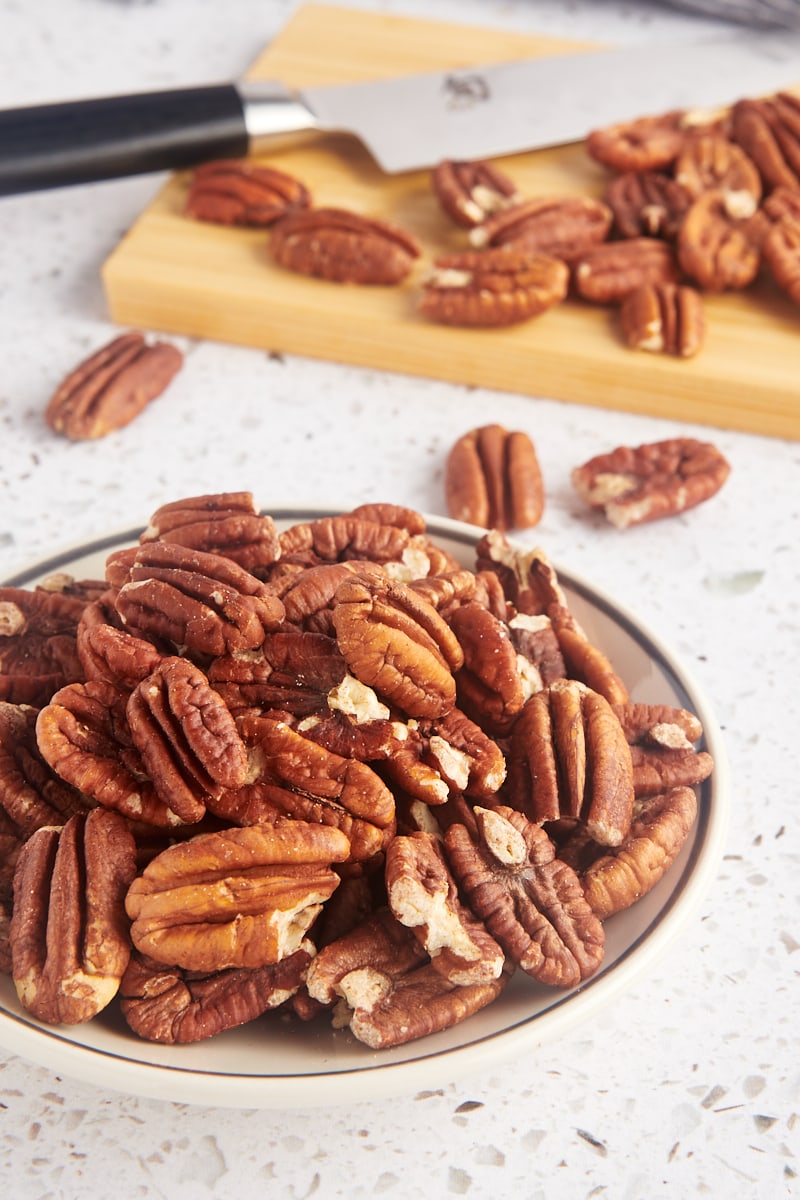
How to Choose Pecans for Toasting
It should come as no surprise that good quality pecans are key here. You want to choose the right ones for the tastiest results. Here are some things to consider.
- Freshness – Fresh is always best. Stale or old pecans may have a rancid taste. If you’re buying them in the shell, choose nuts with intact shells, as cracked ones may indicate staleness. For pre-packaged pecans, make sure the package is airtight and check for an expiration date. If you’re buying from a bulk bin, consider if they seem to have been stored in a cool, dry area without excessive light or heat.
- Variety – There are many varieties of pecans, and their availability varies by region. Store-bought pecans may not specify what variety they are, but you may find those specifics in specialty stores, online retailers, or farmers markets. A few of the more common varieties are Elliot, Desirable, Stuart, Cheyenne, and Western Schley.
- Origin – You’re more likely to see the origin of the pecans on the label than their variety. Some areas like Georgia and Texas are known for producing good quality pecans.
- Appearance and aroma – Look for any signs of discoloration or damage. The pecans should have a mild, nutty aroma and no hint of rancidness.
Can I Toast Chopped Pecans?
While toasting pecan halves is generally preferred, you can also toast chopped pecans. They’ll toast more quickly than whole pecans, so keep that in mind and watch them in the last few minutes to make sure they don’t go too far.
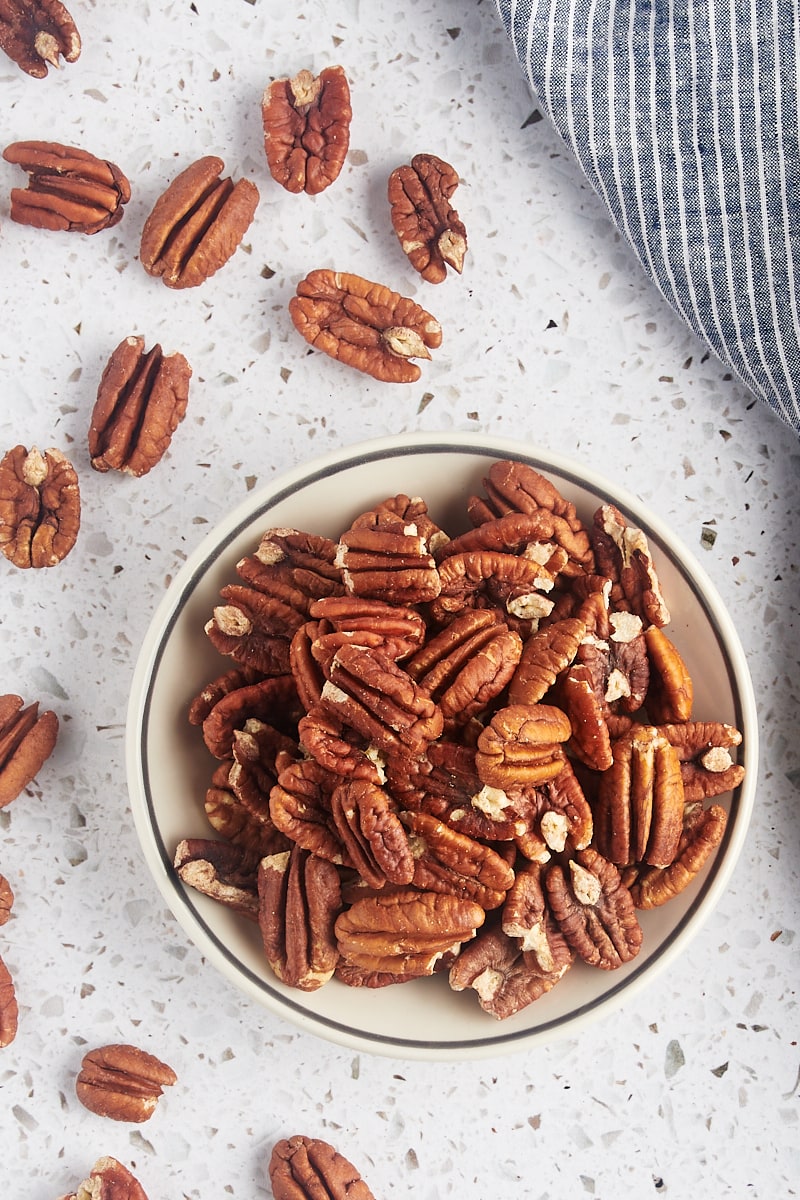
Two Ways to Toast Pecans
Let’s talk about the two most common ways to toast pecans. Either way works well, so choose whichever method suits your needs and preferences. You’ll need different tools and equipment depending on which method you choose.
How to Toast Pecans in the Oven
To toast pecans in the oven, you’ll need a rimmed baking sheet and a long-handled spoon or spatula.

Spread the pecans in a single layer on the pan. I prefer to line the pan with parchment paper or aluminum foil before toasting them, but you can also toast them directly on the pan.
Heat the oven to 350°F. Place the pan in the oven and bake until they’re fragrant and browned. Depending on how toasted you want them, this will usually take 8 to 12 minutes. Stir them about halfway through the baking time to help them toast evenly.
Keep a close eye on them, as they can burn quickly. After you’ve toasted pecans a few times, you’ll have a good idea of how long you need to toast them to your liking. You’ll also notice the nutty aroma they create as they toast, letting you know they’re ready.
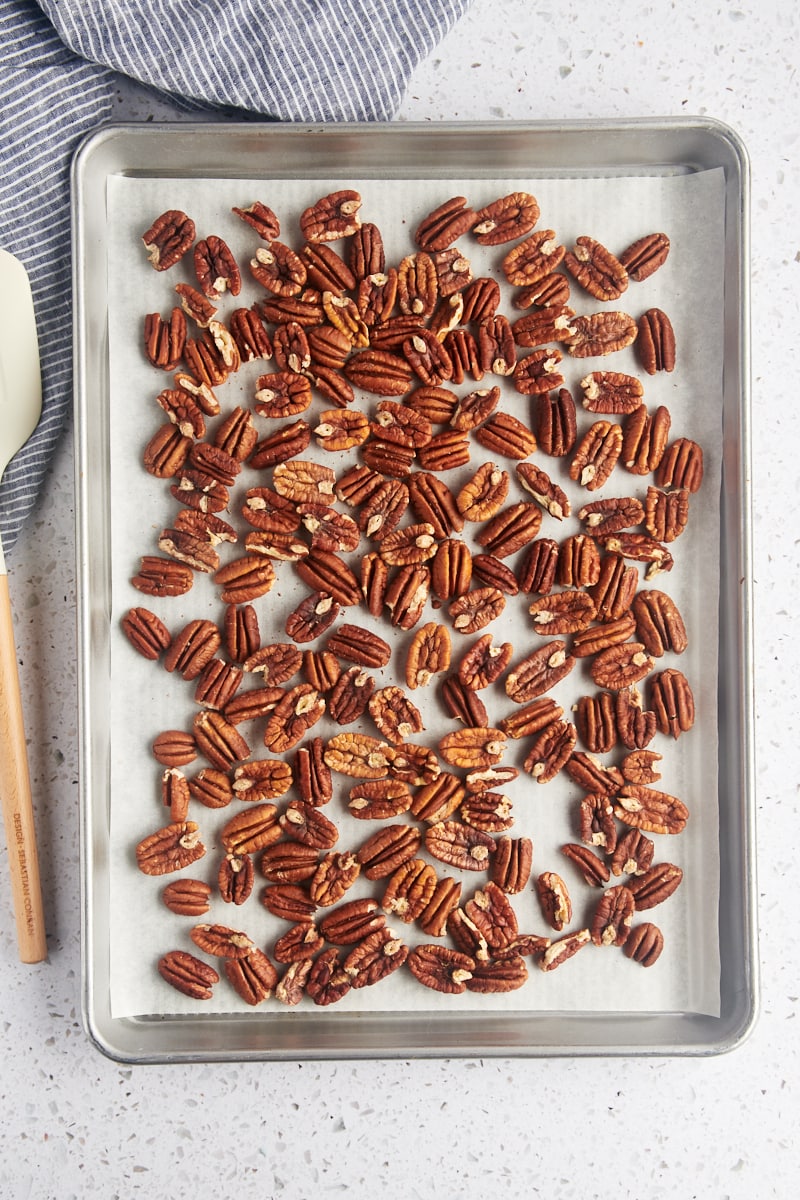
Cool the toasted pecans on the pan before using them or chopping them.
This method allows you to toast the pecans without needing to give it your undivided attention. It also allows for toasting a larger batch of pecans than the stovetop method.
How to Toast Pecans on the Stovetop
To toast pecans on the stovetop, you’ll need a medium to large skillet and a long-handled spoon or spatula.
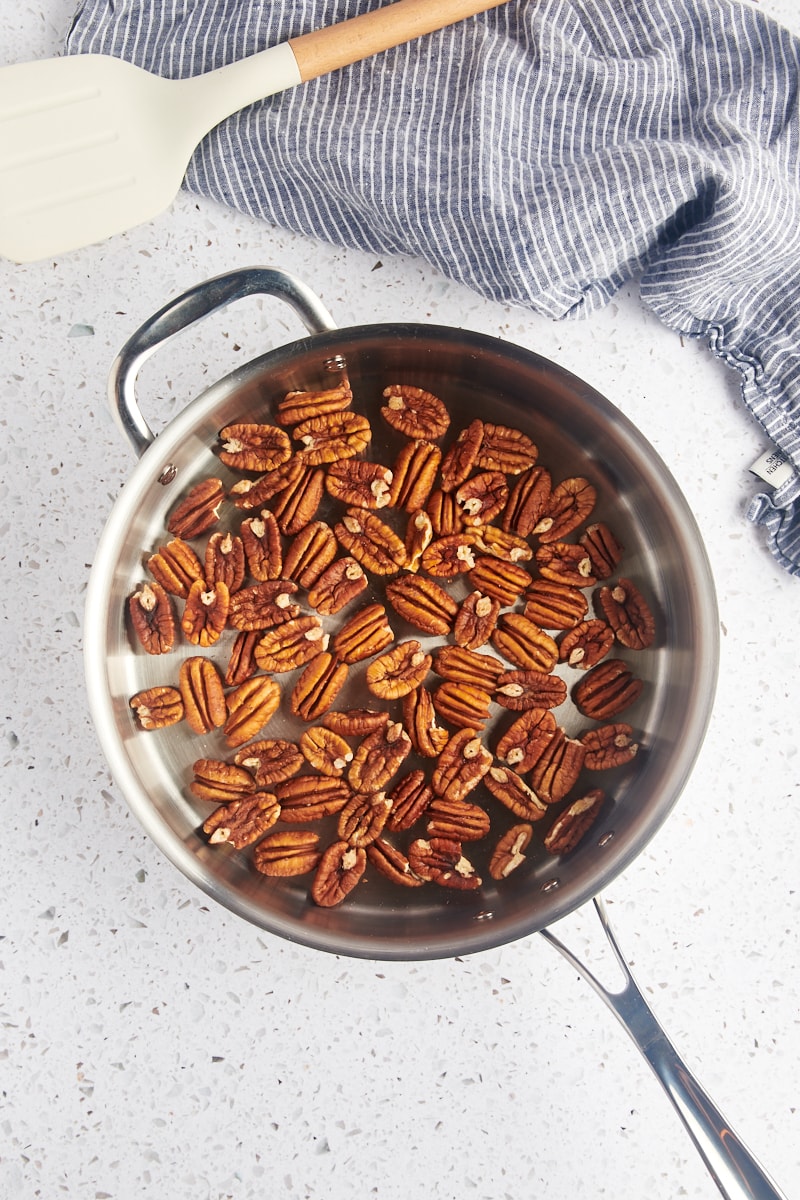
Heat a dry skillet over medium heat. Depending on how well your pan conducts heat, you may want to increase to medium-high heat. Add the pecans to the skillet once it’s hot. Cook, stirring occasionally, until the pecans are browned and fragrant. This will take 8 to 12 minutes.
Transfer the pecans to a plate to cool to room temperature before using or chopping.

This method is more hands-on than the oven method. But that allows you to keep a close eye on the nuts as they toast so they’ll be just the way you like them. If you’re new to toasting nuts, this is probably the best way to start.
Can You Toast Pecans in the Microwave?
While you can simulate toasting pecans in the microwave, it will not give you the same even toasting and depth of flavor that you’ll get from toasting in the oven or on the stovetop. Still, it’s an option if you need to toast a small batch of pecans quickly.
Spread the pecans evenly on a microwave-safe plate. Heat in the microwave at half power in 30-second increments, stirring after each interval. Repeat until the pecans are toasted to your liking. Keep in mind that they can go from toasted to overdone quickly, so watch them closely toward the end.
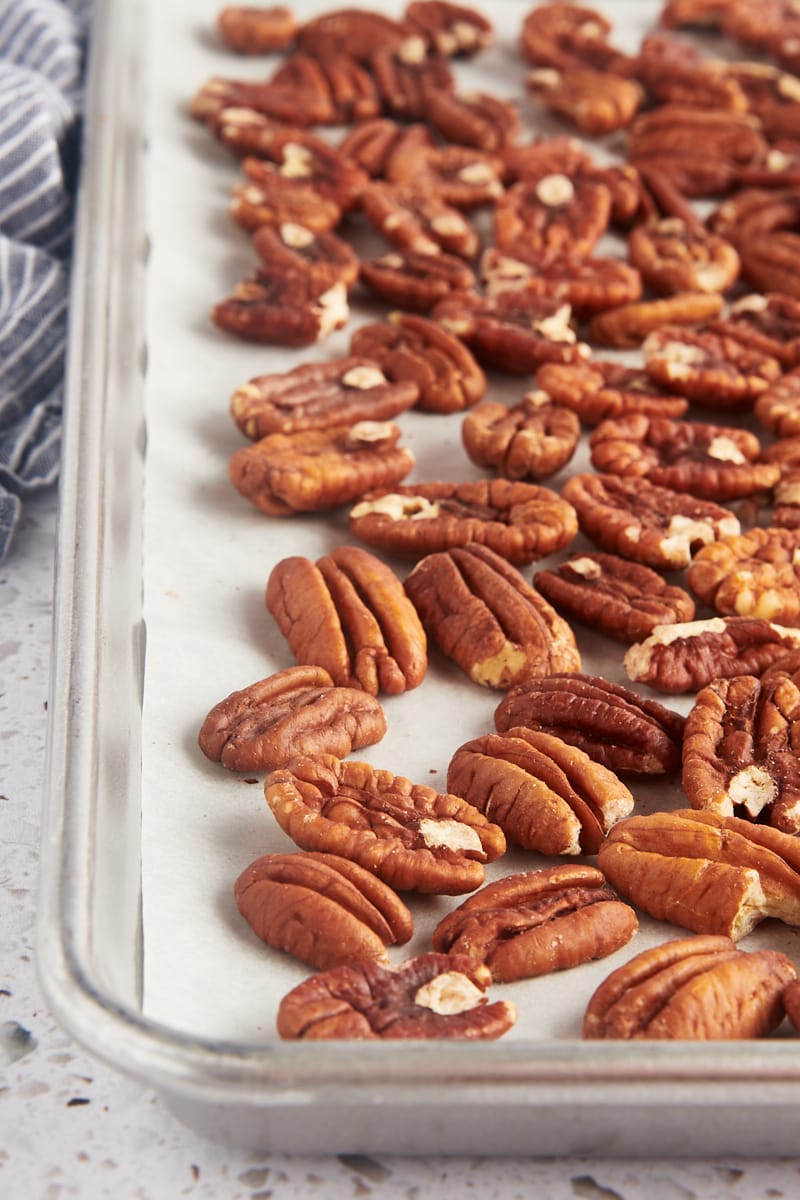
Tips for Success
Here are a few pointers to help ensure your pecans are perfectly toasted.
- Use fresh pecans. You’ll get the best flavor from good, fresh pecans.
- Spread evenly. To help ensure even toasting, spread the pecans in a single layer in the pan.
- Watch closely. They can go from toasted to burned fairly quickly, so keep an eye on their color and pay attention to the aroma as well. Be sure to set a timer so you don’t forget to check them.
- Make adjustments. Not everyone likes the same level of toasting, so adjust the time to get them just as you like them.
Variations
In most recipes, simply toasting the pecans as described above is sufficient to add flavor and depth to your baking. However, you can experiment with adding spices and flavors. Try something as simple as a few pinches of flaky sea salt, or go with a sprinkle of cinnamon, sugar, or a blend of spices.
To take things a step further, you can add butter and other ingredients to make glazed or candied pecans.
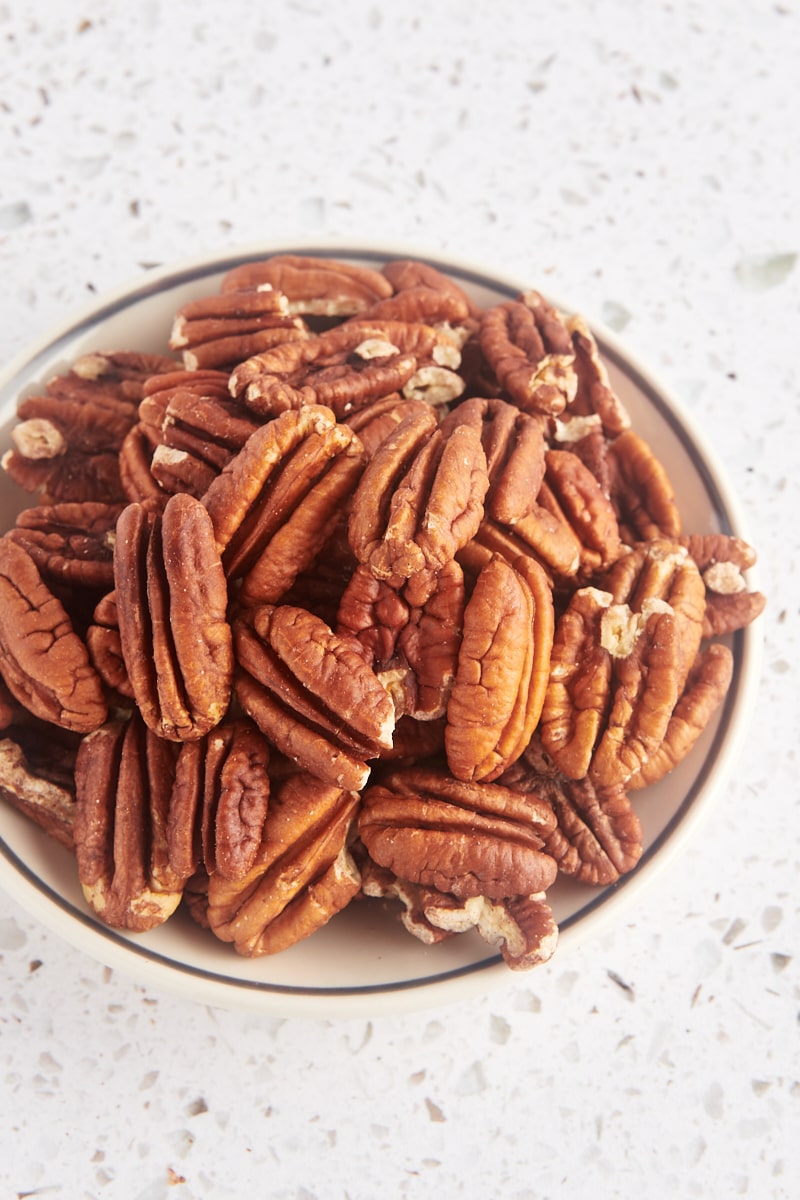
How to Toast Other Nuts
Most nuts can be toasted in the same ways as described above for pecans. However, there are some differences among them to consider so you can make adjustments.
- Walnuts generally toast well and in a similar manner as pecans, but you may find that they toast a bit faster. They also can become bitter if over-toasted, so be sure to keep watch and be aware of the aroma while toasting.
- Almonds are smaller than pecans with a similar oil content, so they are likely to toast more quickly. Like walnuts, they can become bitter with too much toasting.
- Hazelnuts can be toasted much like pecans, although their higher oil content means they’ll likely take longer (10 to 15 minutes). Toasting can be done with or without their skins. Skin-on toasted hazelnuts have a more complex flavor and often have a chewier texture than blanched toasted hazelnuts. If you’re toasting them with the skins, you can use a towel to rub them after toasting to remove the skins before using.
- Cashews can be toasted in much the same way as pecans. They are usually smaller than pecans, so they’ll need less time. Often, 5 to 10 minutes will suffice.
- Pistachios can be toasted either in the oven or on the stovetop as described above for pecans. While they are smaller than pecans, they have a lower oil content. They’ll take about the same amount of time to toast – 8 to 10 minutes.
- Macadamia nuts are large and have a high oil content, meaning they’ll take longer to toast. Check after 10 minutes, but they may need up to 15 minutes.

How to Use Toasted Pecans
For the most part, you can use toasted pecans in your baking the same way you would use raw pecans. You can also enjoy them as a snack or use them as a garnish on desserts, salads, and other foods.
If you’re looking to bake with toasted pecans, you may want to skip the toasting for baked goods that have a layer of pecans on top because the nuts usually get toasted during the normal baking process.
Otherwise, use your toasted pecans in cookies, cakes, and other desserts. Here are some of my favorite ways to use them.
- Toasted Pecan Bundt Cake
- Chocolate Chunk Pecan Cookies
- Pecan Pie Bars
- Bourbon Pecan Biscotti
- Chocolate Pecan Tart
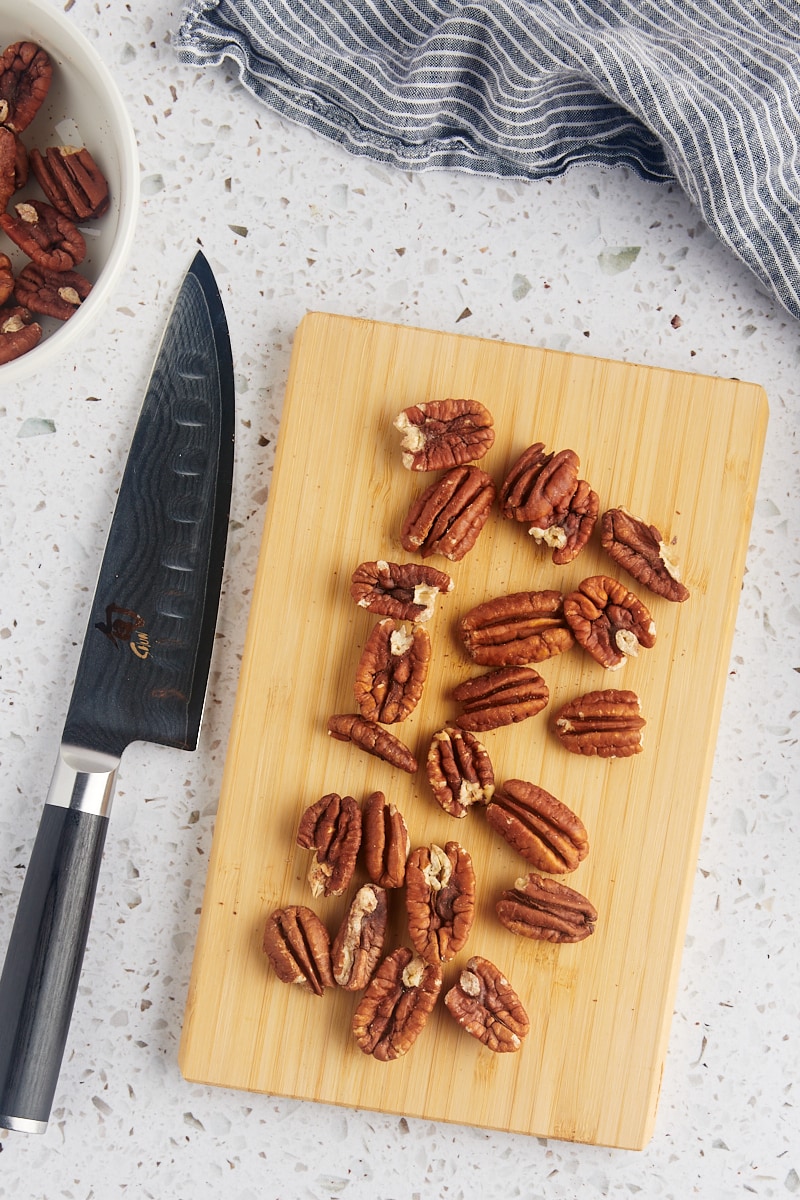
How to Store
First, be sure to allow the toasted pecans to cool completely to avoid condensation forming during storage. Then transfer the cooled pecans to an airtight container, such as a zip-top bag or a storage container with a tight-fitting lid. If you’re using a bag, squeeze out as much extra air as possible before sealing to help keep the nuts fresh. If you won’t be using the pecans soon, be sure to label and date the container.
Store in a cool, dry, dark place like a pantry or cabinet. You can also store them in the refrigerator. Properly stored, the pecans can keep up to 3 months, but be sure to check them for freshness before using.
Can Toasted Pecans Be Frozen?
For longer storage, you can freeze toasted pecans. Place the pecans in an airtight, freezer-safe container or sealed bag, removing as much air as possible. Properly frozen toasted pecans can last for several months.
Periodically check your stored toasted pecans for any signs of rancidity, off odors, or loss of flavor. If you detect any of these, it’s time to replace them.
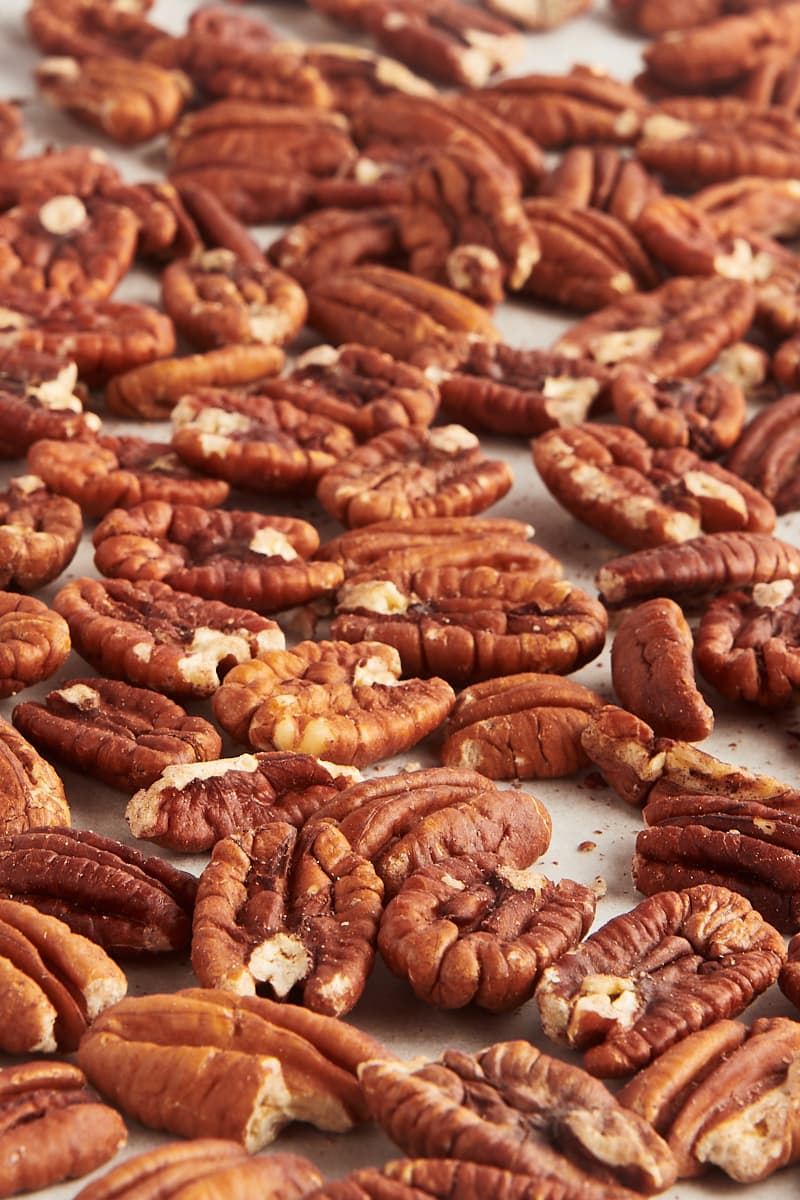
Frequently Asked Questions
It’s usually recommended to toast pecans before chopping them, but you can certainly toast chopped pecans. Just keep in mind that they’ll need less time to become toasted.
Store completely cooled pecans in an airtight container, such as a zip-top bag or a lidded container. You can store them at room temperature, in the refrigerator, or in the freezer.
Use toasted pecans as you would raw pecans, but be cautious of using them in recipes that bake with a layer of pecans on top as they may become over-toasted. Add them to cookies, cakes, brownies, and more to add flavor and complexity. Or simply use them as a garnish for savory and sweet dishes.
Toasting pecans usually means dry heating in a skillet or on a baking sheet, giving them a crisp, crunchy texture and a nuttier flavor. Roasting pecans typically involves adding a small amount of fat or oil, making them slightly softer and giving them a different flavor profile. However, you’re likely to find that these terms are often used interchangeably.
Look for a uniform, golden-brown color. This can vary depending on the degree of toasting you prefer. The pecans should also have a fragrant, nutty aroma. They should feel dry, due to their releasing their natural oils during toasting. Finally, toasted pecans should have a crisp, crunchy texture.

